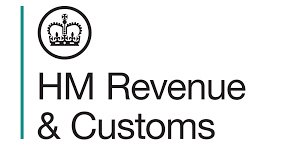HMRC SDLT: Understanding Market Value for Stamp Duty Land Tax Non-Cash Consideration
Understanding Market Value for Stamp Duty Land Tax (SDLT)
The concept of market value in the context of Stamp Duty Land Tax (SDLT) is defined under FA03/S118 and is based on several sections of the Taxation of Chargeable Gains Act 1992 (TCGA92). It refers to the price assets might reasonably fetch in an open market sale. When non-cash considerations, such as services, are involved, their market value is determined similarly. While professional valuation advice is recommended, it is not mandatory. The value declared can be subject to enquiry, and guidance is available for establishing market values without including VAT.
- Market value is defined under FA03/S118, relying on TCGA92/S272, S273, and S274.
- It refers to the price assets might reasonably fetch in an open market sale.
- The purchaser is responsible for providing a valuation, though formal advice is not required.
- Non-cash considerations, like services, are valued as if purchased on the open market.
- Guidance is available for establishing market values, excluding VAT from hypothetical transactions.
“`

Read the original guidance here:
HMRC SDLT: Understanding Market Value for Stamp Duty Land Tax Non-Cash Consideration
Understanding Market Value for Stamp Duty Land Tax (SDLT)
What is Market Value?
The definition of market value under the Stamp Duty Land Tax (SDLT) can be found in the Finance Act 2003, Section 118 [FA03/S118]. This concept is important when determining how much stamp duty you need to pay on a property transaction.
Key Definitions from Tax Legislation
The definition of market value is based on other tax laws. Specifically, it refers to definitions given in the following sections:
– TCGA92/S272: This refers to the market value of an asset for capital gains tax purposes.
– TCGA92/S273: This concerns how market value should be determined in certain transactions.
– TCGA92/S274: This includes specific rules for valuing shares.
These sections help to clarify what is meant by market value in different situations.
How is Market Value Determined?
Market value is mainly used for land transactions. The way market value is calculated will depend on how the consideration (the payment or exchange for the property) is settled.
1. Transfer of an Asset
When a land transaction is settled by transferring an asset, the market value of that asset is the amount it might reasonably be expected to sell for in the open market.
Example: If you transfer a painting as part of a property exchange, you will need to figure out the price the painting could likely fetch if it were sold. This value becomes relevant when calculating SDLT.
2. Provision of Services
If the consideration for a land transaction is settled by providing services instead of cash, the market value of those services is determined by how much they would likely cost if purchased in the open market.
Example: If you agree to do renovation work on a property as a form of payment for a land transaction, the market value will be based on how much a similar renovation would typically cost if it were done by a professional contractor.
Consulting Professionals for Valuation
There is guidance available for determining market values through discussions with professionals at HM Revenue and Customs (HMRC). For more detailed advice and procedures, you can refer to SDLTM80350, which outlines how to go about finding a proper valuation.
Exclusion of VAT in Market Value
It’s essential to understand that when calculating market value, Value Added Tax (VAT) is not included. This means that even if VAT is applicable on the actual transfer of the asset, for the purpose of market value assessment, you must base your calculations on a hypothetical transaction where VAT does not play a role.
Example: If a property is valued at £200,000 and VAT of £40,000 is chargeable, the market value for SDLT purposes remains £200,000. The VAT amount is not considered part of the market value.
Practical Implications
When engaging in land transactions, knowing how to establish the market value is critical. The following points are vital for ensuring you understand and comply with SDLT obligations:
– Determine if the consideration is an asset transfer or a service.
– Ensure you are using the correct sources (like TCGA92 regulations) to define market value.
– Remember to exclude VAT from your market value calculations.
Each circumstance will be unique, and it is often recommended to seek professional assistance when you’re unsure about how to establish the market value for SDLT purposes.
Consequences of Incorrect Market Value
If you assess the market value incorrectly, it could lead to underpayment or overpayment of stamp duty. This may result in HMRC seeking additional taxes plus penalties, which can be avoided by ensuring accurate valuations upfront.
– Underpayment: If you pay too little SDLT based on a low market value, HMRC may ask you to pay the outstanding amount, plus interest and fines.
– Overpayment: If you pay too much, recovering that overage can be a lengthy process and could tie up funds unnecessarily.
Final Thoughts on Determining Market Value
Understanding how to determine the market value is vital in land transactions. Always consider the method of consideration, either through asset transfer or the provision of services, and ensure you align with established guidelines. When in doubt, seeking professional expertise can save time and resources, ensuring that you comply with the SDLT requirements accurately.
Maintaining clarity on these concepts is essential, not only for compliance but also for sound financial management in property transactions.







